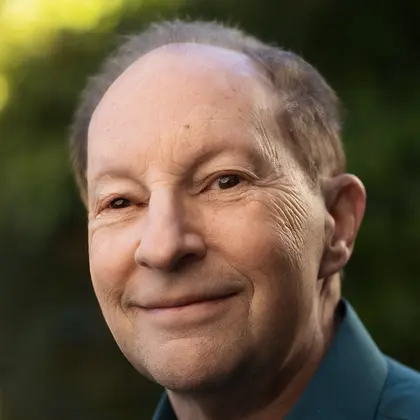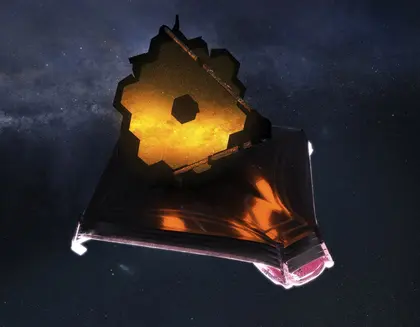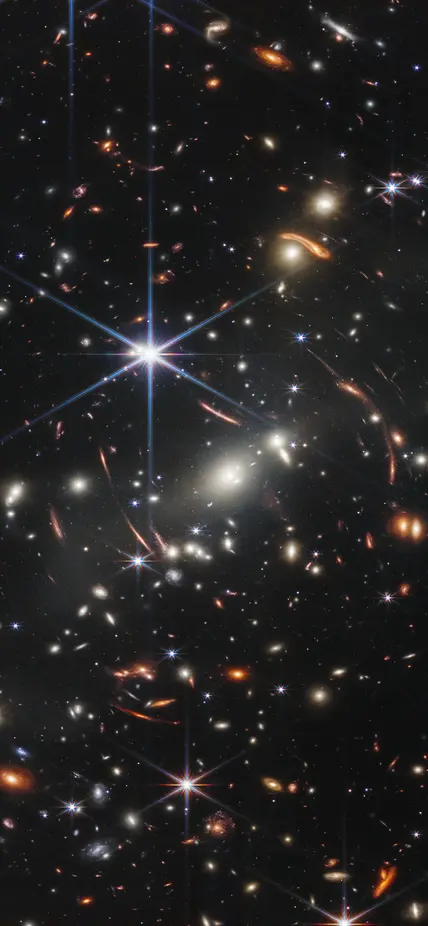
JWST is revolutionizing our understanding of some of the earliest galaxies in the universe. Recent work led by Carnegie’s Alan Dressler is using the space telescope’s infrared capabilities to reveal stunning details about the second generation of galaxies to form after the Big Bang.
The universe started as a hot, murky soup of extremely energetic particles. As this material expanded outward, it cooled and coalesced into neutral hydrogen. Some of these patches of hydrogen were denser than others and, eventually, their gravity overcame the cosmos’ outward trajectory and collapsed inward, forming the first stars and galaxies.
“The oldest stars in the universe were probably too faint for JWST, but we're seeing the birth of the second generation in ways that surprise us,” Dressler said.
Throughout their lifetimes, and even in death, stars produce chemical elements. When stars end their lives in violent supernova explosions, they seed the surrounding gas with the fruits of their production.
“Without galaxies to host generations of stars and accumulate the heavy chemical elements that are essential ingredients in planets—and life—our universe would have fizzled,” Dressler explained.
JWST was designed and built to help elucidate this connection between the early universe and the raw material from which life sprang.
In the early 1990s, Dressler was asked by the Associated Universities of Research in Astronomy, or AURA, to head up a committee of astronomers that would come up with questions that technological advances could help answer in the coming decades.
"The committee recommended an "Origins" program for a “once-in-a-species” opportunity to witness our cosmic beginnings, by constructing a space telescope bigger than Hubble. It would need to be extremely cold and positioned very far from Earth in order to observe these “cosmic cradles” using infrared cameras.
Now Dressler is using JWST’s Near InfraRed Camera, or NIRCam, to take extremely deep images of about 900 galaxies from the first billion years of the universe’s lifetime. He is finding that these galaxies experienced explosive bursts of star formation—exceeding the rapid growth that astronomers expected to find. His findings are accepted for publication in The Astrophysical Journal.

“We suspected that in the early universe, galaxy growth would be fast and dynamic, due to the gas-rich nature of the surroundings,” ‘Dressler said. “In comparison, modern galaxies form stars much more slowly; there's much less gas available for star formation today.”
Dressler developed a computer code that is able to extract a galaxy’s star formation history from JWST’s observations thanks to special stars, called A-stars, that make fantastic “cosmic clocks” due to their massive size and very blue coloring. Using this, he revealed three different patterns of star formation among his nearly 900 galaxy sample:
- Galaxies that had one intense burst of star formation, with hundreds of millions of years—before and after—with little or no star formation;
- Galaxies that experienced two rapid bursts of star formation separated by a period of inactivity and then no new star formation;
- And galaxies that grew steadily over time in the way that we’re used to seeing modern galaxies behave.
Despite their comparatively slow growth, the “steady builder” galaxies accounted for one-third of stellar mass from the 894 sampled.
“What’s astonishing is that single-burst and double-burst galaxies account for nearly three-quarters of the galaxies we studied,” Dressler said. “And they surpass anything we’ve seen or predicted. Astrophysical theorists will have to figure out an explanation for what we’re seeing here.”
Dressler has proposed that that these bursts of star formation were enshrouded by dust for tens of millions of years, revealing themselves only after the enormous energy of star formation cleared the dust. But more work is necessary to understand why these galaxies are so different from our own and what they can teach us about the first billion years of the cosmos.
